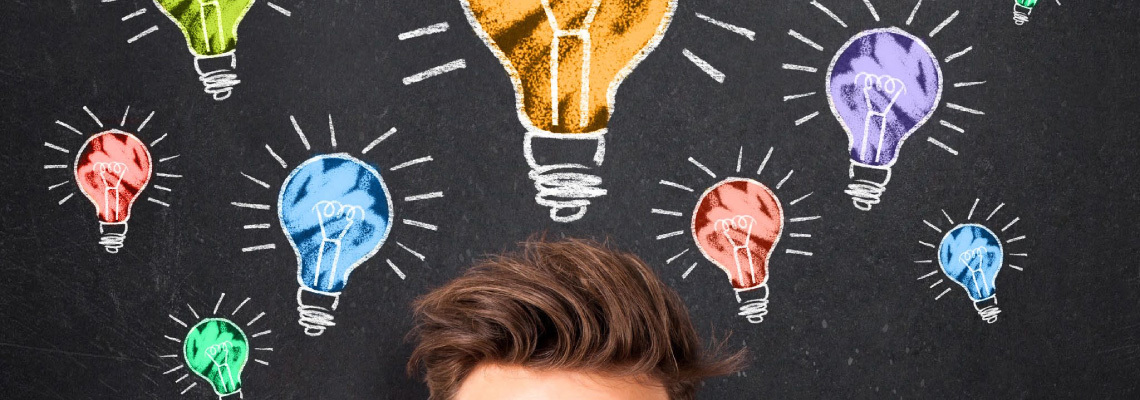Learning and development has recently become an important focus in organisations – and, in a time of rapid change, the highly diversified, knowledge-intensive jobs of today demand more personalised learning paths tailored to the individual as well as to the role or task.
In addition, the costs of traditional approaches to learning have been climbing steadily. More and more staff do not work in the same office or even in the same time zone, creating renewed interest in distributed online learning. Many companies are rethinking their approach to learning and talent, prioritising the individual and crafting a flexible, tailored, and focused learning journey for them.
"If a child can’t learn the way we teach, maybe we should teach the way they learn." -Ignacio Estrada
Learning and development professionals often find that individual self-awareness and diverse learning preferences or learning styles are common challenges in change, leadership and learning programmes. Theorists and researchers have identified a number of ‘learning styles’ that highlight that individuals have different strengths, preferences, and challenges in the ways they learn and the Enneagram can help us understand these needs and tailor interventions accordingly.
The Enneagram and Learning
The Enneagram has the potential to significantly accelerate and maximise investment in learning, leadership development, and coaching by connecting participants to the deepest levels of self-awareness. With this in mind, let’s explore how the Enneagram might shed light on the ideal learning and development environments for each Enneagram Type, and what might support them best.
 Enneagram 1 - Strict Perfectionist
Enneagram 1 - Strict Perfectionist
- Offer them a learning and development environment which is well organised, where work is well planned, rules are reasonable, fair, and consistently imposed and where others are conscientious, responsible, and self-disciplined.
- Remind them that perfection is often the enemy of learning. When striving towards perfection, they can be highly critical of themselves should they get anything wrong, which may derail their learning.
 Enneagram 2 - Considerate Helper
Enneagram 2 - Considerate Helper
- Twos may feel more engaged in learning if they are able to help and are likely to offer to assist the facilitator or act in service of the group.
- Encourage them by highlighting their contribution to the group, but also encourage them to focus on their own learning and fully engage as a participant.
 Enneagram 3 - Competitive Achiever
Enneagram 3 - Competitive Achiever
They are eager to jump into action during the learning process and, consequently, they appreciate theoretical sessions that are concise and reduced to key concepts and offer pragmatic advice that leads to results.
- Enneagram 3s are likely to be motivated by clear, pragmatic goals and expectations and clearly defined learning objectives. Support them in learning and development by encouraging them to set realistic goals for their competency and self-improvement and offer tangible feedback and grading.
- Encourage Threes to benchmark their learning and development against their own personal performance, rather than allowing their competitiveness to focus them on others. Remind them that improvement is the goal, not winning.
 Enneagram 4 - Intense Creative
Enneagram 4 - Intense Creative
- Offer Fours a learning and development environment where their self-expression and emotional authenticity are welcomed, making time to check in on a personal level and reflect on their learning.
- They may also appreciate a unique and creative setting or learning approach, and may benefit from opportunities for them to personalise their learning process to best suit their personal needs.
 Enneagram 5 - Quiet Specialist
Enneagram 5 - Quiet Specialist
- These quiet, reserved observers prefer to work alone and like their need for privacy and boundaries to be respected. Offer them plenty of quiet time and space for reflection and sense-making as they learn.
- Fives learn best in an environment that values curiosity and original knowledge, where there is space for intellectual discussion and topics are explored in depth.
 Enneagram 6 - Loyal Sceptic
Enneagram 6 - Loyal Sceptic
During the learning and development process, an Enneagram 6 is likely to test the material, the facilitator and their peers, bombarding them with questions. To this end, most Type 6s would appreciate an open, equal learning and development environment where questions are welcomed and answered. Type 6s also test solutions and theories in reality, analysing the various scenarios and bringing a sceptical eye to information. This learning style should not necessarily be misinterpreted as defensiveness or resistance. Their need for security and safety should also be respected by creating a sense of predictability, introducing change gradually and methodically, as well as providing a structure, framework, specific instructions, routines, and guidelines.
- To alleviate their anxiety levels, Ennea 6s may require constant reassurance and support in building their belief and trust in themselves and their ability to learn and master the new skills.
- Enneagram 6s sense of loyalty and duty make them team players who often enjoy learning in collective settings, with a learning buddy or group.
 Enneagram 7 - Enthusiastic Visionary
Enneagram 7 - Enthusiastic Visionary
- During the learning process, leverage their enthusiasm for experimentation and mental exploration, and encourage them to take action on their many ideas.
- Type 7s value openness, spontaneity, and enthusiasm and thrive in a learning environment that offers them stimulation, positive energy and dynamic interactions that are relatively free from rules and constraints.
 Enneagram 8 - Active Controller
Enneagram 8 - Active Controller
- While Ennea 8s prefer action learning and putting things into practice, they often need to slow down and fully reflect on what they are learning, not only what they are doing. Influence them to reflect before acting.
- Type 8s may be over-confident in their own abilities and only truly learn once they try to put their new skills into practice. Support them with compassionate debriefing and reflection.
 Enneagram 9 - Adaptive Peacemaker
Enneagram 9 - Adaptive Peacemaker
- We can support Ennea 9s in their learning by creating learning priorities and helping them focus on important tasks through clear agreements and deadlines.
- Nines prefer to have clear expectations and have all the necessary information available to them before they are asked to begin learning. Offer them the opportunity to truly connect, while also challenging them to stretch out of their comfort zone.
A Pathway to Unlocking Learning Potential
By using the Enneagram to focus on an individual’s preferred learning styles and ideal environment, learning and development can become more personalised. With this deeper understanding and ability to personalise learning strategies and paths, organisations and facilitators can become better equipped to teach, inspire, and motivate each individual. This, in turn, can ensure a greater impact on the individual, thereby improving the organisation’s return on investment.
"Personalised learning is not what is done to the learner or about tailoring the learning. It is about helping each learner to identify and develop the skills they need to support and enhance their own learning so that agency and self-advocacy can be realised." -Kathleen McClaskey
Greater self-awareness can be achieved through knowledge of the Enneagram which will also accelerate the learning journey. The journey towards mastery requires more than surface-level insights and quick fixes. The iEQ9 accelerates breakthroughs and creates deep levels of self-awareness. Individuals are empowered with an understanding of their own style, barriers and strengths which can be applied to virtually any development or learning challenge.

 What is the Enneagram?
What is the Enneagram?
 Introduction to the 27 Subtypes
Introduction to the 27 Subtypes
 Introduction to the 3 Centers
Introduction to the 3 Centers
 Wings
Wings
 Lines and Integration
Lines and Integration
 Enneagram History & Origin
Enneagram History & Origin
 Enneagram for Myself
Enneagram for Myself
 Enneagram for Practitioners
Enneagram for Practitioners
 Enneagram for Business
Enneagram for Business
 iEQ9 Individual Reports
iEQ9 Individual Reports
 iEQ9 Team Reports
iEQ9 Team Reports
 iEQ9 Questionnaire
iEQ9 Questionnaire
 Training Events
Training Events
 Level 1 iEQ9 Accreditation
Level 1 iEQ9 Accreditation
 Level 2 Enneagram Team Dynamics
Level 2 Enneagram Team Dynamics
 International Enneagram Conference
International Enneagram Conference
 iEQ9 Community of Practice Events
iEQ9 Community of Practice Events
 About Integrative9
About Integrative9
 Meet the Faculty
Meet the Faculty
 Testimonials
Testimonials
 Contact Us
Contact Us



